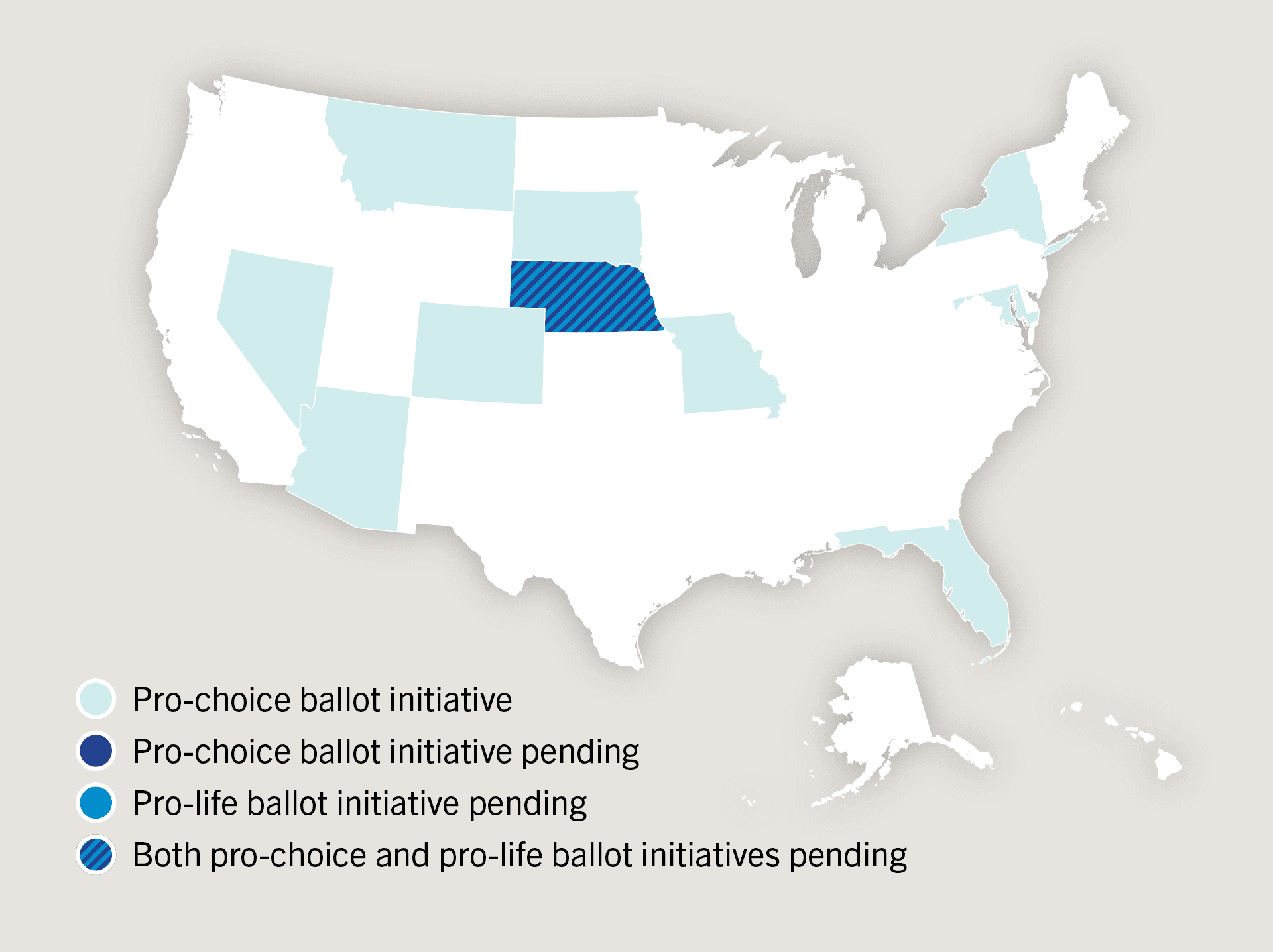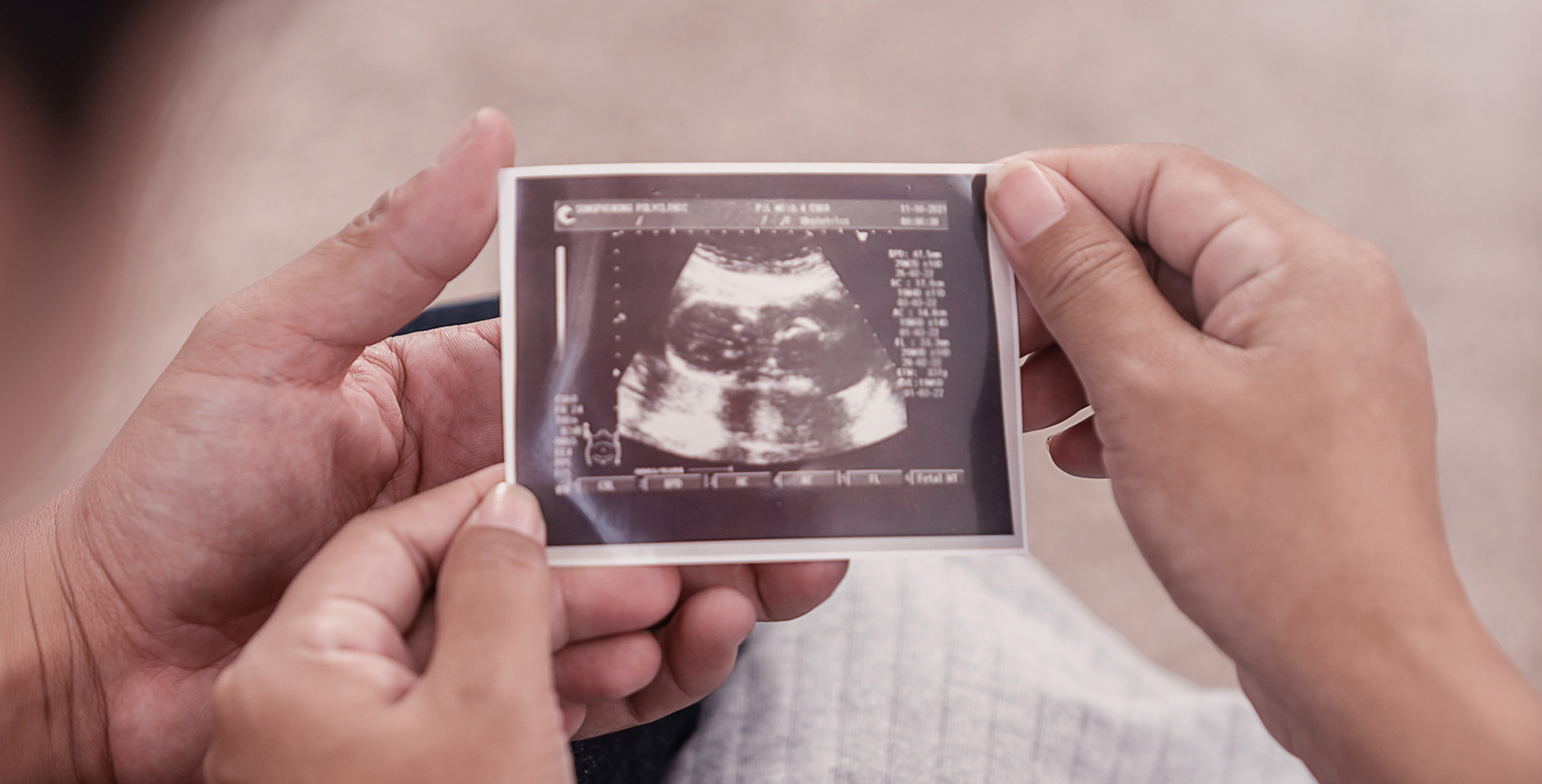Editor’s note: Among many of the most pressing ethical issues of our day is deep confusion over what it means to be human. From questions over abortion and racism to technology and sexuality, human anthropology lies at the heart of contemporary cultural debate. In light of the ongoing sexual crisis seen throughout our society, certain realities that once seemed common sense to most are being challenged in what is a failed quest to define our own existence and live independent of God’s created order.
As part of the ongoing research efforts at the ERLC, the following article, as well as the corresponding piece, “What is a woman?”, offer a detailed look at these central questions in light of theological anthropology and philosophy. Each article is followed by a response from the corresponding scholar in hopes to further robust dialogue on these important questions of “what is a man” and “what is a woman” rooted in truths that cut to the heart of the important ethical questions being posed today.
—
To pose the question “what is a man?” a few decades ago in the United States, and to pose it now in most parts of the world, the inquiry would be met by a snicker or look of puzzlement. The question “what is a man?”—and its counterpart, “what is a woman?”—was/is so obvious that even if no formal definition might be forthcoming, everyone intuitively knew/knows the answer. Such is no longer the case in some societies today. Thus, the question is here re-proposed. To answer it, I will first summarize two common answers—one historical, one contemporary—then defend the following definition:
A man is a human being created in the divine image in the male-type of humankind and who inherently expresses the common human capacities and the common human properties in ways that are typical of and fitting for a man.
A historical answer
Following Prudence Allen’s historical study, The Concept of Woman, I describe in four parts a dominant Greco-Roman philosophical perspective on what is a man, offering for each part an example from Aristotle.1Sister Prudence Allen, The Concept of Woman: The Aristotelian Revolution, 750 B.C.—A.D. 1250 (Grand Rapids: Eerdmans, 1985). Allen herself presents the diversity in this Greco-Roman perspective; Plato, for one, differs significantly at many points from it. Aristotle is highlighted because of his influence on Thomas Aquinas and, through him, Roman Catholic theology. Allen traces the widespread acceptance of Aristotelian sex polarity in latter medieval Christianity (pp. 361-407).
First, sex polarity is the dominant view: men and women are not equal but significantly different, with men being superior to women. Aristotle believed that men and women are opposites as contraries; furthermore, as a pair of contraries, the woman must be the privation of the man. Specifically, women are inferior to men and are identified with matter (rather than form), passivity, and the lowest elements. Oppositely, men are superior to women and are identified with form (rather than matter), activity, and the higher elements.2Allen, The Concept of Woman, 89.
Second, men are superior to women because men possess the ability to produce seed (sperm), and this “particular aspect of human materiality is . . . the key to all valuation of sex identity.”3Allen, The Concept of Woman, 4. Aristotle rejected the correct double seed theory that both male seed (sperm) and female seed (ova) are necessary for reproduction.4Allen notes that the philosopher Empedocles (c. 450 B.C.) “was one of the few [philosophers of medicine] before the seventeenth century to have proposed the correct theory of reproduction, namely, that the mother and the father each provide one-half of the seed needed for the production of the fetus.” Allen, The Concept of Woman, 33. Instead, he affirmed sex polarity based on his (incorrect) view that the woman provides no seed in generation because she, as the privation of the man, is by nature colder than the man, who is superior to her. As the colder privation of a man, the woman is a deformed man.
Third, men are superior to women because men are more highly rational than are women. Human nature consists of both body and soul, which itself consists of two parts. The first is the rational aspect that corresponds to reason; male identity is tied to this higher function of the soul. The second is the irrational aspect that corresponds to the appetite; female identity is tied to this lower function of the soul. According to Aristotle, men and women alike have a rational capacity. In the man, however, his higher power of reason exercises authority over his lower/irrational powers; thus, men have superior reasoning capacity.5Allen, The Concept of Woman, 109. By contrast, in the woman, her higher power of reason is without authority over her baser powers; thus, women have an inferior reasoning capacity. Therefore, they are “capable only of true opinion and not of knowledge . . . and cannot be wise in the same way as men.”6Allen, The Concept of Woman, 103. Accordingly, being inferior epistemologically, women cannot engage in philosophical pursuits nor participate in public life.
Fourth, men and women have different functions and thus have different virtues, with men’s virtues being superior to women’s virtues. Specifically, men rule and women obey, and this is according to nature, not just convention.7For the contrast between nature and convention, see Allen’s discussion of Aristotle and the Sophists. Allen, The Concept of Woman, 43. For Aristotle, because ethics involves a capacity to reason and engage in philosophical argumentation, and because of a woman’s inferior reasoning capacity (which is without authority in women), she is not capable of virtuous activity in this realm. Rather, to be virtuous, a woman must place herself in obedience to a virtuous man (who, as naturally superior, rules her) and express her virtues—e.g., compassion, silence—in the private context of her household and friendship.8Allen, The Concept of Woman, 111.
In summary, this dominant Greco-Roman historical perspective offered this answer to our question: a man is a person who is significantly different from and superior to a woman because he is formed rather than deformed, rational rather than irrational, active rather than passive, hot rather than cold, publicly rather than privately engaged, and is the sole contributor to reproduction. Tragically, this framework has exerted and continues to exert a widespread influence, particularly in Western societies, for over two millennia. One appalling consequence is the dishonoring and demeaning of women. This historical answer is a dreadfully wrong answer.
A contemporary answer
In response to evangelical feminism, the Council on Biblical Manhood and Womanhood proposed the Danvers Statement (1988) with Wayne Grudem and John Piper editing Recovering Biblical Manhood and Womanhood (1991). While not directly answering our question, the latter work defined manhood. Modifying that definition for our purpose, RBMW’s answer is that a man is a person whose “heart of mature masculinity” is characterized by “a sense of benevolent responsibility to lead, provide for and protect women in ways appropriate to a man’s differing relationships.”9John Piper and Wayne Grudem, eds., Recovering Biblical Manhood and Womanhood: A Response to Evangelical Feminism (Wheaton: Crossway, 1991,2006), 29. Henceforth, RBMW. This answer stands in conjunction with another modified definition: a woman is a person whose “heart of mature femininity” is characterized by “a freeing disposition to affirm, receive and nurture strength and leadership from worthy men in ways appropriate to a woman’s differing relationships.”10RBMW, 29. Five observations follow, but first a clarification is needed.
RBMW articulated these derived definitions in the context of a repeated and biblically grounded affirmation of the equality of men and women in terms of essence. For example, men and women alike are created in the divine image; thus, even if role differences between men and women exist, by nature the sexes are equal. This perspective is a far cry from and much needed corrective to the historical answer presented above.
The five observations are: First, the definition focuses on a man’s roles: leadership, provision, and protection.11The Danvers Statement underscores this focus: “Distinctions in masculine and feminine roles are ordained by God as part of the created order, and should find an echo in every human heart” (Affirmation 2). Second, these roles are primarily (though not exclusively) for a man who is a husband. Third, RBMW noted that this “roled” approach is a secondary matter, with the more fundamental matter being a man’s nature (though it did not treat this latter aspect).12As for points 2 and 3, RBMW offers, “We are persuaded from Scripture that masculinity and femininity are rooted in who we are by nature. They are not simply reflexes of a marriage relationship. Man does not become man by getting married. Woman does not become woman by getting married.” RBMW, 21. One wishes that the book would have developed those two concepts beginning with nature. An improper approach is to define a thing by listing its roles, activities, and functions. Rather, a proper definition is about the nature or essence of that thing. For critiques of this “roled” approach (and, by extension, other “roled” approaches), see Jordan L. Steffaniak, “Saving Masculinity and Femininity from the Morgue: A Defense of Gender Essentialism,” Southeastern Review 12.1 (Spring 2021): 15–35; Patrick Schreiner, “Man and Woman: Toward an Ontology,” Eikon, vol. 2.2 (Nov 20, 2020). Fourth, the definition of a woman is formulated in relationship to the definition of man.13This observation is the center of many critiques of the RBMW approach. For example, David C. Freeman, “The Search for Biblical Manhood and Womanhood: A Preliminary Response to the Council on Biblical Manhood and Womanhood,” Alliance Studies at Ambrose University College (November, 1999), available at https://online.ambrose.edu/alliancestudies/ Fifth, these points underscore the fact that RBMW, while well-meaning for the context it addresses, does not penetrate below the surface to actually define manhood and womanhood in terms of nature or essence. Thus, the derived definition of a man is reductionistic.
An essential answer
The need to properly define a man by focusing on his nature leads to the definition presented at the outset:14My thanks to Gracilynn Hanson for her work on female-gendered embodied image bearing, from which my definition is adapted. “Establishing a Framework for Female-Gendered Embodied Image Bearers in a Redemptive Context” (PhD diss., The Southern Baptist Theological Seminary, 2022).
A man is a human being created in the divine image in the male-type of humankind and who inherently expresses the common human capacities and the common human properties in ways that are typical of and fitting for a man.
A brief justification follows:15For further discussion, see Gregg R. Allison, Embodied: Living as Whole People in a Fractured World (Grand Rapids: Baker, 2021). First, God created human beings in his image, and those made in his image are either male or female (Gen 1:26-27). In other words, there is the general kind—humanity, or humankind—of which there are two types: male-gendered image bearers and female-gendered image bearers.16For simplicity sake (and while recognizing the contemporary bifurcation in the use of these terms), in the following discussion, the terms “gender” and “gendered” are synonymous with the terms “sex” and “sexed.” Second, there is no such thing as a genderless or agendered human being; rather, God created his image bearers as either men or women. He did not begin with some kind of generic human being then add on genderedness as a secondary characteristic or type. Everything about human beings as divine image bearers is gendered.
Third, the ground for the distinction between these two types is biological. Men and women are fundamentally different because of chromosome, hormones, and other physiological particularities (e.g., genitalia; skeletal, muscular, and brain structures). Thus, a man is a human being who is characterized by a penis, testicles, the production of sperm, a general range of testosterone to estrogen ratio (T/E2) that is different from that range in women, a general range of muscle mass that is different from that range in women, and more.17Helpful contributions include J. Budziszewski, “The Meaning of Sexual Differences,” and Paul C. Vitz, “Men and Women: Their Differences and Their Complementarity; Evidence from Psychology and Neuroscience,” in The Complementarity of Women and Men: Philosophy, Theology, Psychology, and Art, ed. Paul C. Vitz (Washington, D.C.: Catholic University of America Press, 2021), 9-34, 182-215. In discussions of biological differences, some people offer objections from the (alleged) ambiguity of intersex conditions. For responses to these objections, see Tomas Bogardus, “Evaluating Arguments for the Sex/Gender Distinction,” Philosophia 48 (3) (2020), 873-892; Preston Sprinkle, Embodied: Transgendered Identities, the Church, and What the Bible Has to Say (Colorado Springs, CO: David C. Cook, 2021); do Vale, “Gender as Love”, 312-27. From this biological foundation flows a man’s capacity to impregnate women and his potential of being a father.18Appeals to biology are often part of a “natural law” argument in discussions of manhood and womanhood. For example, Patrick Schreiner, in “Man and Woman”, offers a short treatment of biological sameness and difference between the two sexes. In part, he relies on J. Budziszewski, What We Can’t Not Know: A Guide (Wilmington, DE: Ignatius Press, 2011). Interestingly, various implications are drawn from this natural law argument. In the example that was just given, because of biology, a man possesses the potentiality for fatherhood and a woman possesses the potentiality for motherhood. For further development, see Budziszewski, “The Meaning of Sexual Differences,” 25-29. As a second example, because their reproductive organs are more on the “outside” of their body than are the complementary “inside” organs of women, men are more externally oriented than women, who are more internally oriented. A third example centers around potency: biologically, men are relatively strong, and women are relatively weak, which translates into men being leaders, initiators, protectors, and warriors who are courageous, aggressive, and fearless. As Schreiner explains, “Men are typically (though not always) initiators, builders, and protectors of communities, while women are formers, nurturers, and sustainers of community.” Schreiner, “Man and Woman,” 76. A fourth example draws the following implication for husbands and wives: “the logic of asymmetry operates, and the relationship is profoundly advanced, when partners differentiate: namely, the man by responsibility-assuming and secure-making and mission-defining, and the woman by promoting and strong-helping and rest giving.” Sam A. Andreades, enGendered: God’s Gift of Gender Difference in Relationship (Wooster, OH: Weaver Book Company, 2015), 133. The large range of implications drawn from biological realities of men and women should caution us to be circumspect about the consequences we locate in human nature. At the same time, this position is not what is generally considered to be gender essentialism in the sense of biological essentialism or determinism.19In agreement with Fellipe do Vale, grounding a definition of man in biology does not reduce human nature in general nor the nature of man in particular to biological factors. Nor does this point imply that the answer to our question is that a man is completely explained by biology. Fellipe do Vale, “Gender as Love: A Theological Account” (PhD diss., Dedman College of Southern Methodist University, 2021), 145. As he explains (pp. 148-49), biological essentialism destroys human freedom and moral responsibility, and dismisses the influence of culture and context on the expression of one’s gender (soon to be discussed).
Fourth, God created men and women alike with (1) human capacities: rationality, cognition, memory, imagination, emotions, feelings, volition, motivations, purposing, and more; and (2) human properties—gentleness, courage, initiative, nurturing, patience, protectiveness, goodness, and more. These are common capacities and common properties;20Some of these properties would be the fruit of the Spirit (Gal 5:22-23) and Christian virtues (e.g., wisdom, humility). there are no particular capacities and properties that belong exclusively to men or to women.21Note that these common capacities and properties illustrated differ from biological attributes described above. At the same time, given the divinely created design of embodied genderedness, these common capacities and common properties must and will be inherently expressed in gendered ways that are appropriate to men and appropriate to women. Men typically and fittingly express these commonalities in male-gendered ways, and women typically and fittingly express these commonalities in female-gendered ways.
Fifth, articulating what these “typical and fitting” expressions look like is notoriously difficult. Three errors must be avoided. The one is to so differentiate male and female expressions that the properties expressed become two distinct properties; for example, male goodness and female goodness.22My thanks to Marc Cortez for suggesting this problem in an external reader report. The second error is to so stereotype these expressions that men and women who don’t “fit the mold” become confused and doubt their maleness and femaleness. The third error is to consider “typical and fitting” to be anything that cultural context allows.
As for the first error, the trajectory tends to end up in a double-columned chart with the headings “characteristics of a man” and “characteristics of a woman;” each column is populated by properties that belong uniquely to men or uniquely to women. To illustrate, the common property of nurturing inevitably falls under the second category as we simplistically view that property in terms of mothers breastfeeding their babies. While the biological foundation necessitates that only women can nurture in that manner, men are not thereby excluded from possessing the common property of nurturing. An example is a man who coaches Little League baseball, affirming his players’ progress, developing their batting skills, and correcting errors and meltdowns without belittling his team.
As for the second error, and relying on Robert Spaemann’s Persons: The Difference between ‘Someone’ and ‘Something’, “Persons are not roles, but they are role-players, who stylize themselves in one or another manner.”23Robert Spaemann, Persons: The Difference between ‘Someone’ and ‘Something’ (Oxford: Oxford University Press, 1996/ET 2006), 84. For our purposes, then, “man” is not a role, but “a man” is a role-player; as such, he expresses himself within a culturally-stylized framework. In one context, a man wears a ten-gallon hat and cowboy boots, loves to hunt and fish, smokes cigars, attends NASCAR races, and drives a monster truck. In another context, a man wears an apron and chef’s hat, loves to cook and bake, sips San Pellegrino, attends operas, and rides around in a convertible MINI Cooper. We err when we insist on stereotyping expressions of maleness, elevating what is contextually stylized to a universal sign of being a man. According to a famous proverb, a man is one who has planted a tree, written a book, and fathered a child. Improperly understood and applied, this maxim means that the vast majority of XY-chromosome human beings are not men. That conclusion, of course, is absurd.
As for the third error, affirming that male expressions are contextually stylized does not mean that just any expression is “fitting” for a man. Scripture clearly draws the line. To take one example, a key expression that is culturally influenced is clothing, and Scripture denounces cross-dressing as an abomination to the Lord (Deut 22:5). This law is not only a sartorial rule; it gets to the nature of a man, who is to express himself appropriately as one whom God created to be a man. For a second example, Scripture prohibits “soft” or “effeminate” men, probably a reference to those who play the passive role in sexual activity with other men (1 Cor. 6:9). A man who postures himself and acts effeminately is crossing a biblical line.24The application of this point becomes of concern due to the constantly changing clothing industry and what it proposes for clothes for men and women. For example, is it “fitting” for men to wear bow neck blouses or cropped sweaters? As difficult as application might be, developing a list of proper and improper clothes is a time-consuming and never-ending task and may not turn out to be as helpful as one might expect. Fellipe do Vale offers an interesting discussion from an Augustinian framework of love; see, for example, his development of love and secondary goods like clothing. “Gender as Love”, 257-58.
In summary, we return to our essential definition:
A man is a human being created in the divine image in the male-type of humankind and who inherently expresses the common human capacities and the common human properties in ways that are typical of and fitting for a man.
This definition has important overlap with Jordan Steffaniak’s recent proposal of the causal type of gender essentialism.25Steffaniak, “Saving Masculinity and Femininity from the Morgue,” 22-23, 31-33. Steffaniak presents five variants of essentialism; do Vale rehearses four types. “Gender as Love”, 147-54. He opts for an eschatological kind essentialism, modified by the Augustinian love framework. This is the view that human essence or nature is the ground—the fundamental cause—from which flow human characteristics. While this proposal does not directly address our question, a definition derived for our purpose is that a man is a person who is biologically grounded and ordered to express the common human virtues in a masculine way. To put this notion in a broader context:26Steffaniak, “Saving Masculinity and Femininity from the Morgue,” 32.
Human beings of either sex can practice every virtue indiscriminately. Men are not designed to practice protection whereas women are designed to practice nurturing, as if it is a scale of extremes with men and women on opposing sides and only physically capable of pursuing certain virtues. Men and women can pursue all the same virtues—love, joy, peace, patience, goodness, self-control, etc. However, biology does determine that men have differing levels of capability than women to display particular virtues and differing levels of potentiality to display them.
His illustration echoes an earlier one: “For example, a mother is ordered to express nurturing in a different way than a father upon the birth of a child. Since only the mother is capable of breastfeeding a child, she is given to a form of nurturing that the father is not. While the father can display the same amount of nurturing, he cannot display the virtue in the same ways. Therefore, the social characteristics can be shared by both, but each sex has the potential to display them differently.”27Steffaniak, “Saving Masculinity and Femininity from the Morgue,” 31.
The advantages of this essential definition of a man include: making a clear break from the disconcerting Greco-Roman framework; moving the discussion from a focus on secondary matters like roles and grounding it in nature or essence; encouraging more work on the metaphysics of manhood and womanhood; removing the stumbling blocks of stereotyping male and female roles, behaviors, responsibilities, vocations, and other matters that stem from cultural and ecclesial preferences, traditions, and prejudices rather than from Scripture; and directing future work to champion the pursuit of Christlikeness. As Spaemann, in his presentation of persons as role-players, urged Christians, “take on the only true role that a human being can play—‘putting on Christ.’”28Spaemann, Persons, 85. He appeals to Augustine, Confessions, 8.12.29 (which cites Romans 13:13-14). This expression (Rom 13:14; Gal 3:27) is typical and fitting for men—and for women as well.
A response to “What is a man?” from Katie McCoy
It’s been said that the simplest things can be the most difficult to explain, and that no more so than the definition of a man or a woman.
Gregg Allison’s response to the question “what is a man?” navigates through cultural and ecclesial misunderstandings, weaving together natural theology, historical philosophy, and contemporary critique as well as avoiding the simplistic vernacular that, in some quarters, has compounded confusion in evangelical discourse.
Allison’s definition and defense emphasize the ways in which male and female are corresponding parallels, both biologically and relationally. First, the historical survey of male-female polarity illustrates the effect of Aristotelean thought on Western culture and Christian historical theology—an influence that has led to misguided claims about the differences between male and female in rationality and capacity. These mistaken views further illustrate the connection between one’s knowledge of biological development in utero and one’s understanding of substantive equality between male and female personhood.
Second, the appraisal of the relational definition in Recovering Biblical Manhood and Womanhood, the seminal work in complementarian theology, demonstrates the misguided emphasis on roles. We may make allowances for the historical context in which RBMW was written and the cultural ideas to which it responded. But we must acknowledge the ways in which the work has imposed, as Allison describes, a “reductionistic” definition of man and woman, one that so emphasizes roles that substance of gender is often conflated with the expression of gender.
Critiquing one’s own “camp” is never easy and often misinterpreted. I must express my appreciation for Allison’s thoughtful interaction, and my hope that he and likeminded theologians will expand upon these points. At times, theological discourse on gender has overstated “roled” relationships and advocated specific virtues or dispositions for specific genders. Consequently, its extrapolations have devolved into ascribing “particular capacities or properties” of character to specific genders rather than emphasize the gendered expressions of those capacities or properties.
As Allison notes, stipulating how a man communicates these traits is “notoriously difficult.” He skillfully avoids the tendency toward gender essentialism by grounding male and female differences in biology but rejecting a biological determinism that ignores cultural influence. Still, given that human beings are irreducibly male or female, while also being personally more than their maleness or femaleness, how ought we to understand the relationship between the gendered self and the sexed body?
In Theology of the Body, John Paul II identifies this in the “nuptial meaning of the body,” or “the communion of persons” that exists in the marital union. Thus, man understands his identity as a man through his similarity to and difference from the woman, and vice versa. “Femininity is found in relation to masculinity and masculinity is confirmed in femininity. They depend on each other.”29John Paul, II, Theology of the Body in Simple Language (Philokalia Books, 2008), 16. John Paul II discusses at length how the celibate person also fulfills the nuptial meaning of the body by being “married” to God (168, 173). However, given the metaphor of human marriage between a human male and human female (Eph 5:22-33), this lacks the fullness of the relational meaning of gender for the unmarried man or woman. Yet even this locates the substance of masculinity and femininity exclusively in the relationship between husband and wife. In a definition that would exclude even the Apostle Paul, no wonder Christian theology feels so gridlocked on this question.
I would welcome Gregg’s additional research on this perennial issue and hope he will expand his commentary on the relationship between man/woman and male/female.
Read “What is a woman?” by Katie McCoy








